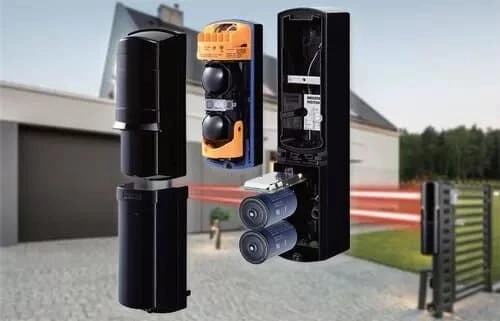An infrared (IR) sensor is popular wireless technology, including remote control functions and detecting surrounding obstacles. It is a simple electronic device that emits and detects IR or thermal radiation. It is enabled with the ability to recognize heat and movement.
IR sensors use wavelengths between 0.75 µm and 1 mm. The infrared area can not be seen with the human eye but can be felt like warmth on the skin. In simple terms, an Infrared detector is a device that uses sensors that react to infrared radiation. The waves are not visible to the human eye.
Humans are colorblind compared to some animals who can see a broader range of colors. Infrared detectors are used in security cameras, motion and window sensors, and heat sensors. Infrared detectors are an essential element of the security of a house. They are an important tool that makes security devices work more accurately. These detectors are reliable. This helps the owners feel safe when they are away from their homes.
Moreover, an Infrared sensor is used in many applications like motion detection, night vision, astronomy, art restoration, and gas detection. The infrared radiation colors are interpreted as visible light; the blue color indicates cool temperature, whereas the red indicates hot temperature.
The Working Module
The main components of the Infrared Detection System are the IR transmitter, transmission medium, and IR receiver. IR transmitter acts as a source of radiation. According to the law of radiation, any object having a temperature above 0 K is a source of IR radiation. The transmission medium enables the passage of radiation from the IR transmitter to the IR receiver via vacuum, atmosphere, and optical fibers. IR receivers can be photodiodes and phototransistors.
The IR transmitters and receivers are chosen according to the parameters, such as sensitivity, noise power, and effectiveness. The IR transmitter emits radiation of a wavelength that reaches the object and gets reflected. The IR receiver detects the reflected radiation. It is then processed according to intensity. Generally, the output signal of the receiver is small, so amplifiers are used to detect the amplified signals.
Some Benefits Of Infrared Sensor Are:
- It uses low power, which makes it perfect for electronic devices like laptops and phones.
- It can detect movement with or without the presence of light with the same accuracy
- The infrared detectors need no contact with the detection object
- These devices do not get affected by corrosion or oxidation
- These are resistant to high noise.
IR sensors are used in almost all equipment:
- Radiation thermometers have a faster response. The sample and measurement work without direct contact with the object.
- The alarm system senses the body temperature. If it detects a high temperature, the alarm goes off.
- There is radiation felt between the transmitter and the receiver. If the object intersects the radiation, it detects the object.
- A burglar alarm is another item where the transmitter and receiver are on either side of the door. Constant radiation is maintained, and an alarm gets activated when any object crosses the path.
- Proximity sensors are used in smartphones to find out the distance of an object.
For more clarity on Infrared sensor, kindly connect with Optex Pinnacle and discuss your requirements



